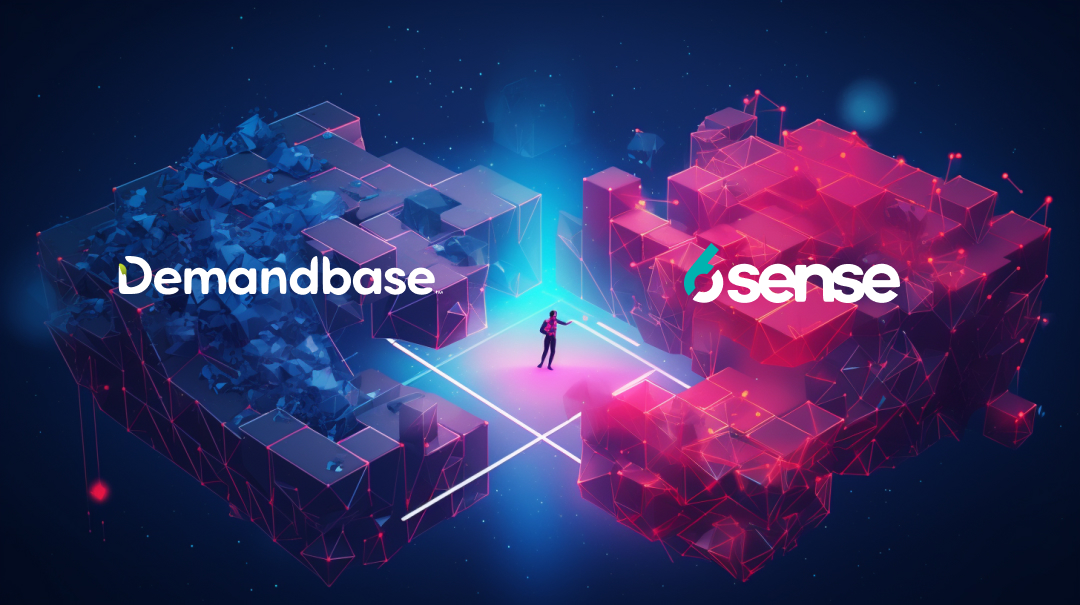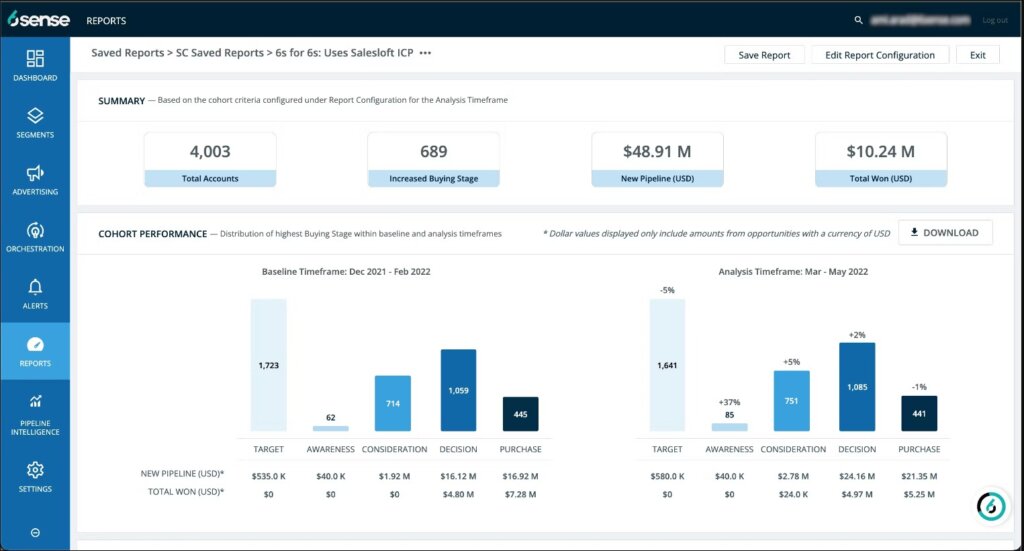6sense Vs. Demandbase

Buyers call the shots in the highly competitive world of online B2B sales. The best way for B2B sellers to hold their attention is to show them that you really, truly get them. That means understanding their big-picture pain points and feature wish list, of course, but also who the people behind the company are, how they like to make their purchasing decisions, and where they’re at in their buyer journey. To reach buyers at this level, you need an Account-Based Marketing (ABM) strategy backed up with accurate data and the right tools.
B2B sellers have been figuring out that they can’t afford to go without an ABM strategy in today’s marketplace. When done right, ABM can increase marketing revenue by more than 200%. These results are a big reason why the ABM market keeps growing at such a rapid pace—more than 11% per year and on track to reach a size of $1.6 billion within the next five years.
ABM is no longer the secret sauce; it’s expected. Sellers need to go the extra mile to make their marketing efforts stand out, with sales and marketing teams aligning to target Ideal Customer Profiles (ICP). Having the right software tools is essential, as you will need automated, data-driven solutions for meeting your buyers at precisely the right time and channel.
Right now, two of the biggest names in ABM software are 6sense and Demandbase. While similar in many ways, these platforms have a few significant differences that can make it difficult for B2B companies to choose between them.
In this post, we’ll compare the two powerful platforms side-by-side and determine if one has the edge over the other.
6sense Vs. Demandbase: Why compare the two?
When B2B sellers try to decide whether to go with 6sense or Demandbase for their primary ABM solution, there may not be an immediate clear choice. They each perform the essential functions of an ABM platform: identifying target accounts, engaging with targets across their preferred marketing channels, and analyzing key performance metrics.
Both platforms are highly rated and have die-hard fans, so appealing to the crowd’s wisdom isn’t going to help much. The differences that matter might not be clear upfront before you’ve had a chance to try the platform out and attempt to integrate it with the rest of your tools.
It’s always better to find out about these critical differences before you’ve committed to a significant software purchase, so let’s start by examining each platform on its own merits.
What is 6sense, and what does it do?

As a full-featured ABM platform, 6sense helps companies generate revenue from their sales pipeline by identifying the best targets, segmenting them by key demographic and firmographic characteristics (such as industry type, annual revenue, and company size), and serving up customized advertising. 6sense was the first AI-powered ABM solution to hit the market, using artificial intelligence to predict which accounts to target.
To get your ABM campaigns rolling, 6sense starts by analyzing the customer relationships currently captured in your CRM and your website’s traffic data. By identifying networks of B2B partnerships and applying its predictive AI model, 6sense can reveal a fuller picture of the buyer journey and help you deliver personalized communications and marketing content.
6sense integrates with CRMs like HubSpot and Salesforce and journey orchestration tools like Trendemon, leveraging its data to provide those solutions with rich data and actionable insights.
What is Demandbase, and what does it do?

Demandbase is an ABM solution that emphasizes “account intelligence” as its greatest strength, defining it as a combination of your CRM data and marketing resources plus the data it gathers about firmographics, technographics, purchase intent, business contacts, and other factors.
For Demandbase, the goal is to accelerate your marketing automation activities and provide customized messages and experiences to the target accounts it identifies for you. Demandbase harvests data from a wide range of sources and constantly updates its account intelligence model.
Demandbase’s data and analytics can help B2B sellers build a robust go-to-market strategy, and it integrates with many popular CRMs.
6sense Vs. Demandbase: The Breakdown
To get a sense of where these two solutions diverge in terms of accessibility, features, and benefits, let’s break it down in a head-to-head comparison.
| 6sense | Demandbase | |
| Deployment | Cloud | Cloud |
| Customer Segmentation | Yes | Yes |
| Lead Scoring | Yes | No |
| Lead Qualification | Yes | No |
| Campaign Personalization | Yes | Yes |
| Reporting and Analytics | Yes | Yes |
| Free Trial | No | No |
| Capterra Score | 4.6 ★ | 4.3 ★ |
| Integrates with Trendemon | Yes | No |
Both platforms are cloud-based SaaS solutions that serve B2B companies of all sizes. Neither offers a free trial version, and pricing is only available by inquiry. Reviewers have many positive things to say about both of them, but Demandbase’s average score is lowered by issues with reporting and the difficulty of its initial setup.
The two platforms can handle all of the required functions of an ABM platform, but 6sense provides more lead management features. While each platform integrates with most CRMs and many popular marketing solutions, 6sense offers more integration options, including integration with Trendemon.
6sense Vs. Demandbase: What’s the best choice?
Based on a fair comparison of each platform’s capabilities and key features, we have to say that while they are both worthy competitors, 6sense is the clear winner. It does a better job of managing the leads in your pipeline and fostering unity between your sales and marketing teams. These are crucial ingredients for executing an ABM strategy that delivers consistently high ROI.
6sense has been an AI-based solution from its inception, while Demandbase only recently added AI to its account intelligence engine. While Demandbase can still generate useful account-targeting insights, it has some catching up to do in figuring out how to take advantage of the full potential of AI in an ABM context.
In addition, 6sense’s integration with Trendemon means that you can harness the power of its data to guide your journey orchestration campaigns and deliver personalized content that will have the maximum impact on your buyers.
6sense and Trendemon: Powerful Personalization

The reason why it matters so much that 6sense integrates with Trendemon is because they work so well together. Trendemon can read 6sense segments and identify website visitors that are part of those segments, allowing you to create audiences for personalized content based on 6sense’s segmentation.
With 6sense and Trendemon working together, your website visitors are no longer anonymous “anybodies” who might need the basics of your product explained to them. Trendemon can use 6sense’s account data to create orchestrated campaigns that run autonomously, serving the right content to the right visitors at the right moment. It can also shed light on how many of your target accounts interact with your website and provide you with opportunities to show them the most relevant content and CTAs.
The numbers tell the real story. Trendemon customers who use 6sense data to optimize the buyer journey convert anonymous website visitors into pipeline opportunities at a rate five to eighteen times higher than non-optimized journeys. Sign up for a free demo if you’d like to see how Trendemon can map out buyer journeys and orchestrate campaigns that lead to increased sales and higher revenue.